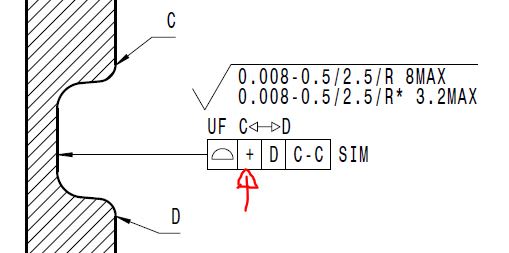Bogdan,
A '+' symbol alone is not the standardized way to indicate unilateral outside tolerance zone.
In ISO, it would be UZ modifier being used. If for example the tolerance is 0.2, the tolerance compartment would say 0.2 UZ +0.2, meaning the entire tolerance is outside the material. But a tolerance value is needed anyway for the requirement to be meaningful.
Also, what does datum reference C-C mean.
If a datum is established from two features, it would be B-C or something similar.
Maybe it's made to some internal standard? Very odd.


![[thumbsup2] [thumbsup2] [thumbsup2]](/data/assets/smilies/thumbsup2.gif)